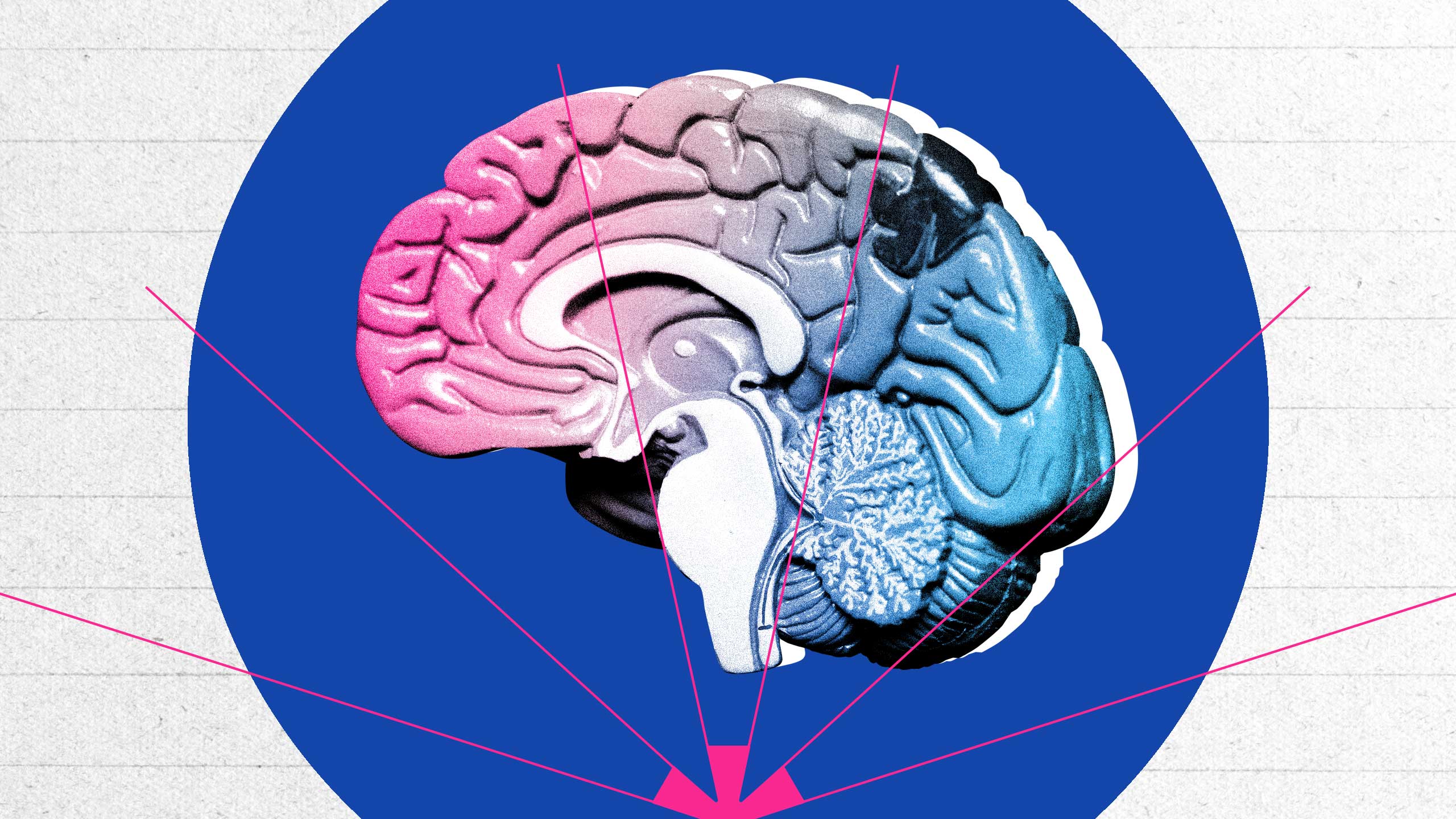My therapist was the one who brought it up. I had asked her why she kept using the word “masking.”
I spent most of our sessions obsessing over why it took me until my 30s to transition—how I had managed to ignore something this obvious. I just hadn’t been able to trust my instincts, I told her. I had learned to think of myself as broken. I was a strange kid; I could read by the time I was three, and my vocabulary was ornate and unusual. I read Jane Eyre in kindergarten, but I couldn’t catch a ball or do basic math. Teachers complained that my affect was eerie, that I seemed like a small old person inhabiting a child’s body, that I freaked them out. I refused to socialize with kids my own age. It was a safety measure; the kids had learned that I could be provoked into volcanic, sobbing meltdowns if you pressed the right buttons, and for a certain sort of child, pressing those buttons became a sport.
I couldn’t get people right, I said. I trusted them too easily. I took them too literally. I swore in front of a teacher, and when he said “repeat that,” trying to intimidate me, I repeated it five times, thinking I could get out of trouble by obeying. I could never sense the little social cues that went into a conversation. I just said what I felt, which was usually a mistake. My mother once snapped at me that “other people don’t always say everything they’re thinking.” My jaw dropped. I looked up at her with pure, overwhelming, cosmic horror: “They don’t?!”
It wasn’t possible to transition as long as I thought of myself as defective. It felt like my gender was just one more way I’d failed to be normal. I mastered a performance of Average, carefully emulating vocal fry to sound fun and youthful, learning how to move my hips when I walked. It was all so exhausting I could barely leave the house.
Then there was a pandemic, and I didn’t have to leave the house or pretend to be someone else any more. I transitioned, and I got a therapist, and that therapist kept using the word “masking.” She could not give me a formal diagnosis, she said, but she was pretty well-versed in conditions that overlap with trans identity, and in 2021, the child I was describing would be screened for autism.
It was the strangest feeling; I’d spent years obsessed with my sexuality or my gender, convinced that naming my queerness would explain everything different about me, and here, at the end of that road, was one more obvious thing I’d been ignoring.
My therapist’s suggestion should not have shocked me. “Autistic” is one of the most trans things you can be. Research has uncovered a heavy overlap between the two groups: one 2020 study found that trans and gender-diverse people were between three to six times more likely to have an autism diagnosis. Since autism is underdiagnosed, researchers believe the actual numbers are higher—autistic people probably comprise around 1.5 percent of the population and up to nine percent of trans people.
Yet the mainstream understanding of autism is intensely cissexist. Nearly all medical research has focused on how it presents in cis men, leaving assigned female at birth, or AFAB, and transfeminine autistics underdiagnosed and unsupported. Autistic stereotypes often align with stereotypes of masculinity—independent, “logical,” unemotional, unempathetic—leading to models built on gender essentialism, like the hypothesis that autism is an “extreme male brain.” Popular science articles contain sentences like “the brain of a girl with autism may be more like the brain of a typical boy than that of a boy with autism,” while also routinely misidentifying trans and genderqueer autistics as girls.
When a transphobic world does acknowledge the connection between autistic and trans communities, it’s weaponized. A 2018 study found that 32 percent of autistic trans teens say their identity has been called into question because of their autism. Anti-trans activists, including J.K. Rowling, have floated the conspiracy theory that huge numbers of autistic “girls” are being coerced or duped into identifying as trans. In reality, autism is more likely to be a barrier to transition: Kayden Clarke, a trans man in Arizona, was killed by police during a suicidal crisis in 2016. His doctor had refused to prescribe him testosterone until his autism was “cured.” Autism is a permanent condition.
“When a transphobic world acknowledges the connection between autistic and trans communities, it’s weaponized.”
“Autistic people are more likely not to be trusted with their life decisions. When they’re trans, they will be less likely to be believed,” says Washington, D.C.-based policy advocate and lawyer Victoria M. Rodríguez-Roldán. “Much like we see the ‘children can’t possibly know they’re trans’ arguments to ban transition for children in some jurisdictions, autistic trans people often face barriers to transition in the form of professionals and relatives and others with power over their lives seeing it as part of their autism.”
Even in trans communities, the pressure to advance a palatable “just like you” image—white, wealthy, skinny, cis-passing, both very hot and very cool—can mean that disabled trans people are treated as a liability.
“Trans autistics are very threatening,” says Northern California-based disability journalist and a longtime friend of mine, S.E. Smith. “They directly contradict the idea of what an autistic person is ‘supposed’ to look like (genderless, desexualised) and also the idea of what a trans person is ‘supposed’ to look like…. Both communities can struggle to know what to do with them.”
Thus, many neurodivergent trans people can land where I did—obsessed with being or seeming “normal” rather than figuring out what they need. “There’s a real pressure to behave a certain way,” Smith says. “To be the right kind of [disabled] or the right kind of trans.”
“There’s no effective route to equality as long as one particular way of being is framed as the one ‘normal’ and ‘natural’ way of being,” says Nick Walker.
Walker is a self-described “flamingly autistic” author, webcomic writer and psychology professor. She’s also one of the originators of the term “neuroqueer”—the practice of “subverting neuronormativity,” or the idea that there isn’t one right way to have a human brain.
Mainstream models of autism don’t map onto a queer experience of gender. Yet there’s a rich tradition of trans autistics doing this mapping themselves. Walker’s neuroqueerness—which involves embracing and making cultural space for neurodivergent ways of being as part of what she calls “the war for self-determination and for liberation from compulsory normativity”—is one model. So is Lydia X.Z. Brown’s famous definition of themself as “gendervague”: given how entangled gender is with social cues, Brown wrote, even many more-or-less cis autistics “can’t make heads or tails of either the widespread assumption that everyone fits neatly into categories of men and women or the nonsensical characteristics expected or assumed of womanhood and manhood.”
“Mainstream models of autism don’t map onto a queer experience of gender, so trans autistics are doing this mapping themselves.”
This work posits ways to be queerly autistic or autistically queer. It allows for the possibility that the two experiences might enhance each other—that maybe, the further out you get from “normal,” the more liberatory your vision can be.
“Framing noncompliance as pathology is a long-standing strategy for enforcing the status quo,” Walker says. “The noncompliant can then be robbed of freedom, abused or interfered with in all manner of ways, in the name of ‘treatment.’ If you want an idea of how far back this strategy goes and how potentially oppressive it is, look up drapetomania sometime.”
I did look it up. “Drapetomania” was the “mental illness” invented to explain why enslaved people ran away from their masters. It also supports Walker’s thesis that neuronormativity is a tool through which other oppressive systems like racism, capitalism and transphobia can function. Max Thornton, a New York-based scholar of disability, gender and religion, frames the intersection in terms of “misfitting.”
“I mean misfitting in the literal sense: the years I spent bullied or outcast as a child, the hours spent wondering what was wrong with me, the sense that I had never received my copy of the Handbook for Being a Person that everyone else seemed to have,” Thornton says. “Were these experiences about gender or about neurodivergence? I can’t separate them.”
But “misfitting,” he says, also refers to American disability studies scholar Rosemarie Garland-Thomson’s idea of a disability as an instance of “misfit between a body and its environment.” That is, the issue is not what type of brain you have, but whether your society is set up to accommodate a person with your particular brain—just as the problem with being trans is not your gender, but a cissexist society that fails to accomodate your gender.
“Both my gender and my neuroweirdness are sites of misfitting with my environment,” Thornton says. “But the environment is a capitalist hellscape with ableism and transphobia baked into its foundations, so who wants to fit?”
I still lack a formal autism diagnosis. There is no universally acknowledged standard for diagnosing adults; the tools we have are developed for children, and symptoms can become harder to detect as one ages, so an informal ruling from a therapist or family doctor is all many people get. My neurodivergence has non-autistic dimensions—I experienced violence early in life, so my system was likely scrambled by PTSD—which may make it harder to reach a verdict. I’m ambivalent about pursuing a diagnosis that might limit my ability to transition.
“I’m increasingly content to live in that fluid territory of neuroqueerness and neuroweirdness and neurodiversity.”
It’s also true that “neurotypical” doesn’t seem like a remotely plausible explanation for my life story. Among other things, my hyperlexia—the clinical term for my prodigious reading—was so pronounced that I wound up being studied by multiple universities by the time I was in third grade. There is still no button to put on this, no single, definitive word that explains everything about me. I’m increasingly content to live in that fluid territory of neuroqueerness and neuroweirdness and neurodiversity; the compulsion to explain away my differences may, after all, be one more way of trying to “fix” them. Maybe I don’t need to look for the magic word that makes me a worthwhile person. Maybe I need to accept that I was never broken.
Peeling apart the layers of neurodivergence and trauma and gender in my story, or anybody’s story, is impossible—all those things happened to the same person, and that person is one undivided whole. Queer and trans people are taught to hide and doubt ourselves in a thousand ways as we grow up. Neurotypical or not, we all learn the art of masking.
We get to learn unmasking, too, which most people never do. We understand the self-annihilation that takes place when we accept the idea that there is one normal, natural way to be. We can reject normativity, wherever it limits us; we get to decide that nothing is wrong with us, no matter what kind of weird or queer we are.


 Why you can trust Xtra
Why you can trust Xtra


